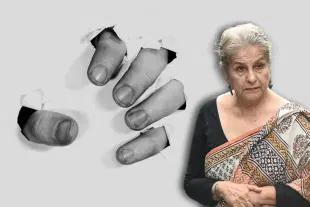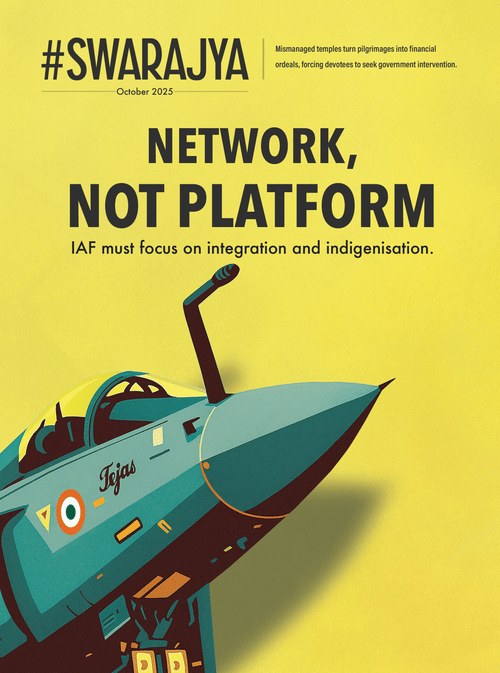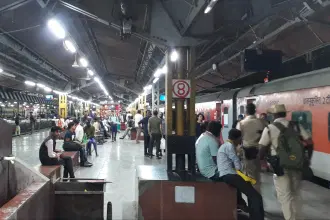Politics
Why Social Activism Is Just Politics In Another Name, Not Social Service
Venu Gopal Narayanan
Sep 18, 2025, 12:03 PM | Updated 01:53 PM IST
Save & read from anywhere!
Bookmark stories for easy access on any device or the Swarajya app.


Syeda Hameed, a social activist, was in the news recently for calling Assam a dangerous monster state. A former member of the Planning Commission, she had no qualms in demonising an entire province merely because the state government of the day was cracking down on illegal immigrants from Bangladesh and Myanmar, mainly Muslims.
While the outrage was instantaneous and widespread, the deeper implications of such egregious statements are best understood by an inquiry into this phenomenon called ‘social activism’. Is it a legitimate profession? Is it a noble calling? Are its objectives respectable?
Perhaps the best way to answer these questions is by adopting the neti-neti technique, and thereby contrasting social activism with social service. What one is, the other is not.
Look at Hameed’s statement: she cares only for the plight of her Miya brethren, to the point of absolute exclusion. What deleterious impact their illegal presence in Assam has on others is of no relevance to her.
Indeed, in the absence of any tenable legal argument, the very purpose of her statement was to try and emotionally legitimise their unlawful existence in Assam by tugging at our heart strings. Thus, anyone seeking to thwart her, or contradict her, was a heartless demon.
Now contrast this statement with the motto of Seva Bharathi, the largest social service organisation in India: Manava Seva Madhava Seva, meaning, service of mankind is service of god. Note that there is nil reference to identity of any kind here. Inference: all humans in need of aid should be served, irrespective of their caste, creed, colour, or any other artificial, man-made classification.
Yet, it is a modern truth that activism has pervaded every sphere of our lives, in a wide spectrum of hues. From animal rights, gender, the environment, to politics, and beyond, every sector of human activity has its attendant band of activists.
No doubt, they are extremely successful in highlighting issues, often through the assistance of the media or powerful interest groups. But the problem with activism is that its end goals always come with an ideological price of some sort, and often a commercial one as well.
This problem is exacerbated by a prevailing tendency for institutions and influential sections of society to practise and promote rigorous political correctness. This is a pedantic, self-serving quack form of problem solving which confuses more than it resolves and kills common sense. In the process, it achieves its true intentions of creating disruptions and legitimising fringe beliefs as mainstream ones.
In effect, such activism often creates problems where none actually exist, or derails reconciliation processes.
A good example explaining the above is the decades-long activism which led to the closure of Sterlite’s copper smelting complex in Thoothukudi, Tamil Nadu, a strategically vital plant for the nation. While the original agitation, over high air and water pollution, may not have been without merit, the activists, instead of forcing a swift reduction in offending emissions, went ten steps ahead and sought a permanent shutdown of the plant.
Such an extreme stance naturally prolonged the agitation, kept the activists relevant and funded (which is what they also wanted), left tempers flared, and resulted in police firing which killed 13 protesters.
In infinite and painful irony, the utter senselessness of this long-drawn-out protest was exposed in July 2025, when the Thoothukudi district collectorate was besieged by a thousand activists demanding, wait for it, a ‘green restart’. This was exactly what Vedanta, the promoters of Sterlite, had proposed in the first place, because unemployment in the area was rife.
To add to the irony, many of the activists demanding a reopening of the plant had also participated in the earlier agitations demanding its closure.
A similar example is the activism surrounding the Sadar Sarovar project on the river Narmada, led by Medha Patkar. What began as a genuine grouse on compensation in the 1980s, and improper resettlement of those displaced by the project, rapidly snowballed into a lengthy agitation against the project itself.
Construction on the dam slowed, was halted by injunctions, and delayed by decades until Narendra Modi, then the Chief Minister of Gujarat, forced the project through.
For a good while Patkar was feted globally as a celebrity activist. People were taking out protest marches in New York. Such sustained obstructionism for obstructionism’s sake meant that millions of people in the semi-arid realms of Gujarat and south Rajasthan started receiving the waters of the Narmada only from 2017 onwards.
And once the project was commissioned, Patkar’s star began to wane.
This is one of the fundamental problems with activism. The last thing activists want is an end to their protests because, if that happens, then they lose their relevance and standing in their champagne circuits.
This is not social service. In reality, social activism is an indirect, neatly dissimulated form of Marxian radicalism, and nothing more.
Another major issue with social activism is the perpetual need for a hate object around which protesters can give clarion calls to rally their forces. Again, this is merely another application of that old Marxist oppressor-oppressed-saviour triangle in which a hate object is the oppressor, the victims are the oppressed, and the social activists are, but naturally, the saviours.
No wonder that these activists need to be at a state of war, whatever the issue, raging constantly against the machine.
Note how Syeda Hameed had to call Assam a monster state if she was to succeed in her aims. Remember how actress Nandita Das had to hastily backtrack and clarify matters after she allegedly said that all men are potential rapists. Perhaps she did not, but the point here is that activism, by its very nature, has an inherent need to shock if it is to take root and function.
Contrast that with genuine social service, whose objectives are twofold: averting a crisis or stemming a descent into misery, followed by an aided path to self-reliance. It is, therefore, meant to be phased and transitory by design. All activities have clear aims, a beginning, and an end.
The pity is that social activism, though perhaps noble in its intent in theory, is flawed in practice. Pick any sector, be it gender, the environment, or health, and you will note that activism reflects many shades. It is evangelical, self-perpetuating, ideological (at times even theological), adversarial, blinkered, obstructionist, binary, or absolutist.
It can, on occasion, function as a paid proxy for interest groups as well. Remember the angry protests at Vizhinjam Port which melted away as swiftly as they had formed?
Social service targets the individual while social activism targets identities. Service is cogitative while activism is agitative. Service is selfless while activism is incentive-based.
This is why social activism can never be equated with social service, and it is important that the distinction be made, especially to avoid confusion in this digital age of white noise.
Service is piety sans reward, and activists professing otherwise are mountebanks with iniquitous intents. That is the truth.
Venu Gopal Narayanan is an independent upstream petroleum consultant who focuses on energy, geopolitics, current affairs and electoral arithmetic. He tweets at @ideorogue.





